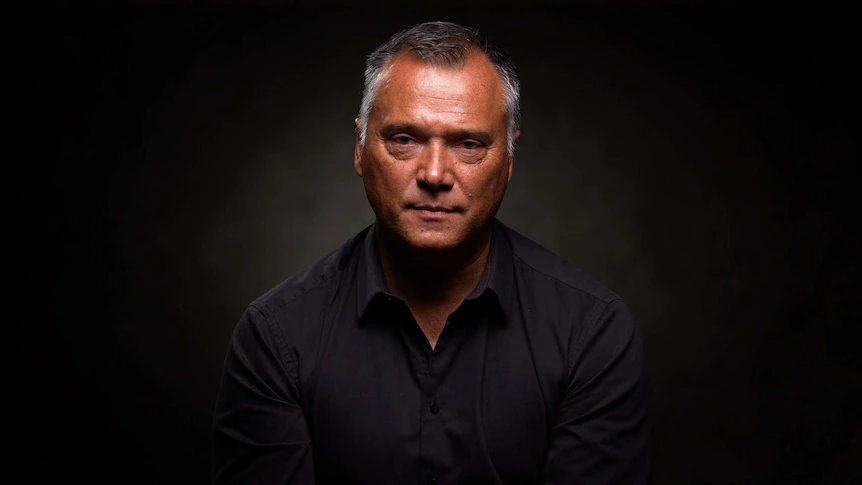Stan Grant, host of ABC’s Q+A, announced last Friday that he would be stepping away from his role for an unspecified period. Grant cited a need to take ‘a break from the media’ after receiving threats and racial abuse following his participation in the ABC’s coverage of the coronation of King Charles.
The abuse directed at Grant has been described by ABC news Chief Justin Stevens as a ‘relentless campaign’ prosecuted via social media trolls, but ultimately one directed by News Corp commentators’ intent on skewering Grant—and the ABC—for foregrounding the role of the monarchy and colonialism in violence committed against Indigenous Australians.
However, in announcing his decision, Grant indicated his primary reason for leaving was not the threats and abuse. Rather, he highlighted the lack of support he had received from others at the ABC—calling it an ‘institutional failure’—as well as a failure of the media overall to foster respectful discussion of important issues.
In recent years interest in news has fallen and more Australians are saying they avoid it. According to the Digital News Report: Australia 2022 – which both authors of this article worked on – those saying they often, sometimes, or occasionally avoid news increased from 57% in 2017 to 68% in 2022.
When asked why they avoided it, the top reasons given were that there was too much coverage of subjects like politics or coronavirus (49%) and that it had a negative effect on their mood (44%).
Notably, women are turning away from the news, citing exhaustion from its relentless negativity as a major cause.
So, what is the media’s role in this? Is Grant correct, that Australia’s news media are fostering a toxic space for public debate?
“I am down but I will get back up. And you can come at me again and I will meet you with the love of my people.” Stan Grant delivers a powerful message on Q+A before taking a break from the media. #StanGrant #QandA #WeStandWithStan pic.twitter.com/avNBJtzSMK
— QandA (@QandA) May 22, 2023
Indigenous and non-Indigenous researchers have found that journalist’s news values, combined with underlying racism and a colonial mindset, contribute to the negative portrayal of Indigenous people and issues. Most insidious is the framing and reinforcement of First Nations peoples as the cause of the conflict and division on which journalists report. This negativity feeds into the newsroom.
Our research suggests that Grant is not the only journalist of the view that there are institutional problems with gender and race in the news industry. As outlined in the Valuing Diversity in News and Newsrooms report published by the News & Media Research Centre at the University of Canberra, 87% of journalists we surveyed said the industry needed to improve diversity ‘somewhat’ or ‘a great deal’.
Less than a third (30%) said their news organisation had enough ethnic or cultural diversity, and less than half (49%) said everyone at their news organisation was treated equally regardless of their ethnic and cultural background.
Among those journalists who identified as non-Anglo, non-European or Indigenous Australian, 39% said they had experienced discrimination in their newsroom because of their ethnic or cultural background. A further 58% and 69% respectively said there were barriers to employment and advancement because of their ethnic or cultural background.
But importantly, journalists also say that discrimination is still a problem widely faced by women. Among women journalists, 47% said they had experienced discrimination, 27% said there were barriers when applying for a job, and 58% said there were barriers to progressing in their career because of their gender.
Women were also more acutely aware of the intersectional nature of discrimination. Most women journalists acknowledged there were barriers to employment (68%) and advancement (65%) because of someone’s ethnic or cultural background, compared to less than half of men (32% employment; 41% advancement).
In both surveys and interviews, journalists pointed out that they felt more likely to experience discrimination if their senior leadership was not particularly diverse. As one interviewee noted, the feeling of not being listened to in majority white newsrooms was common for reporters from multicultural backgrounds.
Women journalists also told us they felt pressure to let things slide. News organisations often foster a competitive and fast-paced workplace culture that pays little heed to gender or cultural sensitivities. The pressure to beat deadlines while performing the model ideal of ‘disinterested observer’ is often at odds with a culture that respects difference. Journalists are expected to ‘put up and shut up’ rather than speak out.
Stan Grant has made the bold decision to speak out at a pivotal time in the national conversation.
In doing so, he is bringing broader attention to the lack of inclusivity that women and people of colour face while working in journalism—a fact that many in the public may not be particularly aware of.
As we move towards The Voice referendum the Australian media industry has reasons to reflect on its own role in undermining the very cause it champions, through employment strategies and taken-for granted news values and routines.
- Picture at top: Four Corners/ABC






